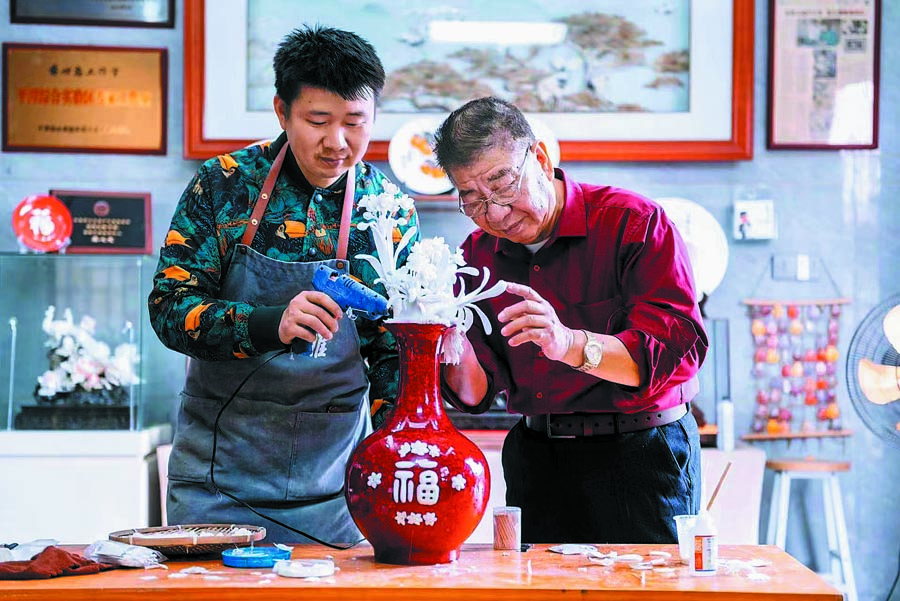

For approximately six decades, the man in his late 70s has engaged in the local craft of shell carving, which boasts a profound history that dates back to thousands of years ago.
Archaeologists found shell accessories at the Keqiutou ruins, a Neolithic site, in Pingtan, in the 1980s.
The shell carving's beauty is a bounty of nature, as Pingtan is surrounded by the sea and enjoys a temperate subtropical climate, both of which have granted the county rich resources such as shellfish, conches and clams of different shapes and colors.
Local artisans have turned the natural gifts into shell-carved paintings in relief and various practical handicrafts since the 1950s, after integrating techniques from jade and wood carving, mother-of-pearl inlay, as well as traditional Chinese painting. It has opened a new page in the history of shell carving.
Known for its three-dimensional, delicate and practical features, Pingtan shell carving has evolved into more than 200 varieties in five categories, such as shell-stacked paintings, 3D round carvings, shell-inlaid lacquerware and shell-carved flower receptacles.
Jiang got enamored with the traditional craft in 1955 at the age of 12, when his art teacher Lin Guoqin led the class to pick up shells on a beach and had the students clean, polish and paste them into delicate artworks.
In particular, one artwork featuring Taiwan elements and made up of thousands of shells won compliments from the central government.
"It was very exciting," Jiang recalls.